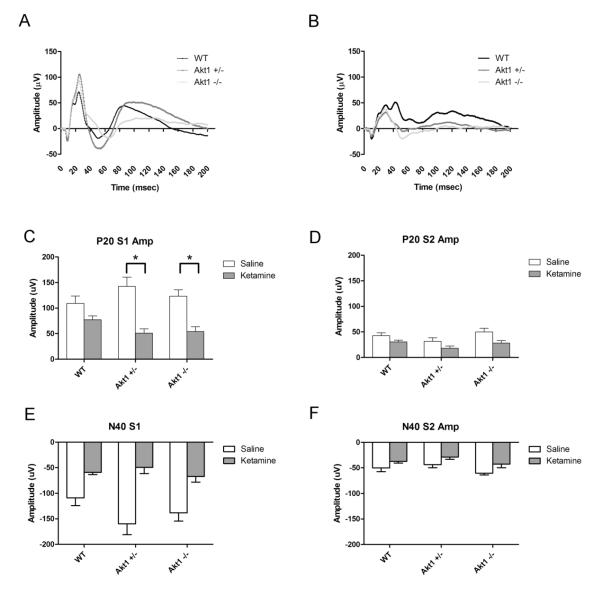Fig 2.
Event-Related Potentials (ERP) in WT, Akt1+/− and Akt1−/− mice. A. Grand Average Waveform for the 200 msec period following presentation of the first white noise click of a paired-click stimulus (S1). WT, Akt1+/− and Akt1−/− mice are depicted in black, dark grey and light grey, respectively. B. Grand Average waveform following administration of 50 mg/kg of the NMDA antagonist ketamine for WT, Akt1+/− and Akt1−/− mice. C. Maximum positive deflection of the P20 response to the first click (S1) following saline (white) and 50 mg/kg ketamine (grey) treatment. Both Akt1+/− and Akt1−/− mice showed a significant decrease in P20 response following ketamine treatment (p<0.05). In contrast, a significant decrease was not observed following ketamine in WT mice. D. Maximum positive deflection of the P20 response to the second click (S2) of a paired-click stimulus following saline (white) and 50 mg/kg ketamine (grey) treatment. No differences were observed between groups on this measure. E. Maximum negative deflection of the N40 response to the first click (S1) following saline (white) and 50 mg/kg ketamine (grey) treatment. A significant main effect was observed for ketamine, but this did not differ as a function of Genotype. F. Maximum negative deflection of the N40 response to the second click (S2) following saline (white) and 50 mg/kg ketamine (grey) treatment. Asterisk depicts significance at p<0.05

